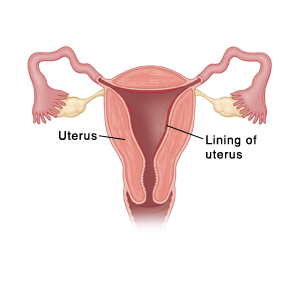Menstruation occurs when a woman sheds the lining of her uterus. It's also called a period. For most women, this happens once a month. But some women may not get their periods. This is called amenorrhea.
Amenorrhea may be due to a number of causes. These include:
-
Pregnancy, breastfeeding, or menopause
-
Hormone problems
-
Emotional stress
-
Very low body weight
-
Exercising too much
-
Poor nutrition or eating disorders
-
Taking certain medicines
-
Having certain birth defects or genetic disorders
There are 2 types of amenorrhea:
-
Primary amenorrhea. Thisis when a girl has not had her first period by age 15.
-
Secondary amenorrhea. This is when:
-
A girl or woman who has been having normal periods stops getting them for 3 months in a row
-
A girl or woman who has been having irregular periods stops getting them for 6 months in a row
-
One or more tests can be done to find out why you’re not having periods. These include blood tests and imaging tests. Once the cause is found, it may be treated. Treatments can range from lifestyle and diet changes to medicines, procedures, or surgery. Your healthcare provider will discuss choices with you as needed.
Follow-up care
Follow up with your healthcare provider, or as advised. You'll be told the results of any tests as soon as they are ready.
Pregnancy
Note: Know that you can still become pregnant even if you are not having regular periods. It's important to use some form of birth control if you are sexually active and don't want to get pregnant.
When to get medical advice
Call your healthcare provider right way if any of the following occur:
-
Severe pain in the belly (abdomen)
-
Belly swelling
-
Sudden, severe vaginal bleeding
-
Feeling faint or passing out
Featured in


